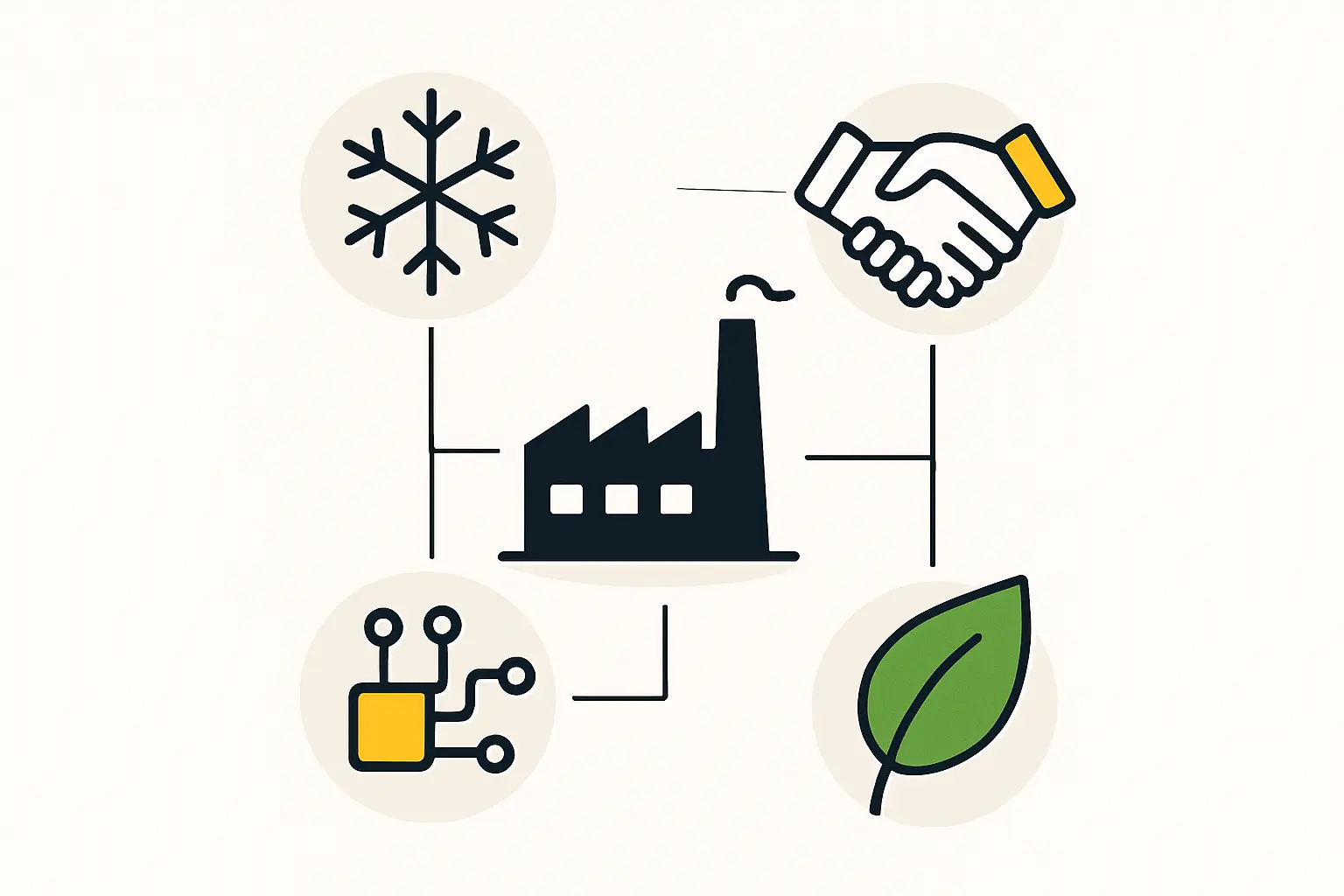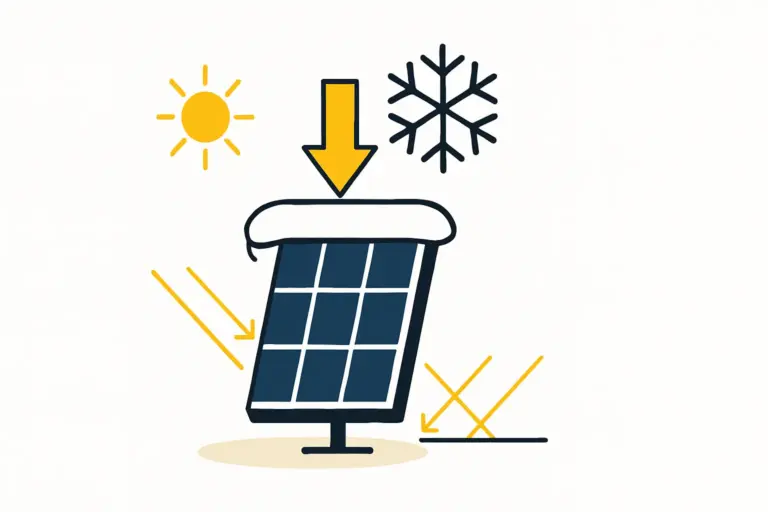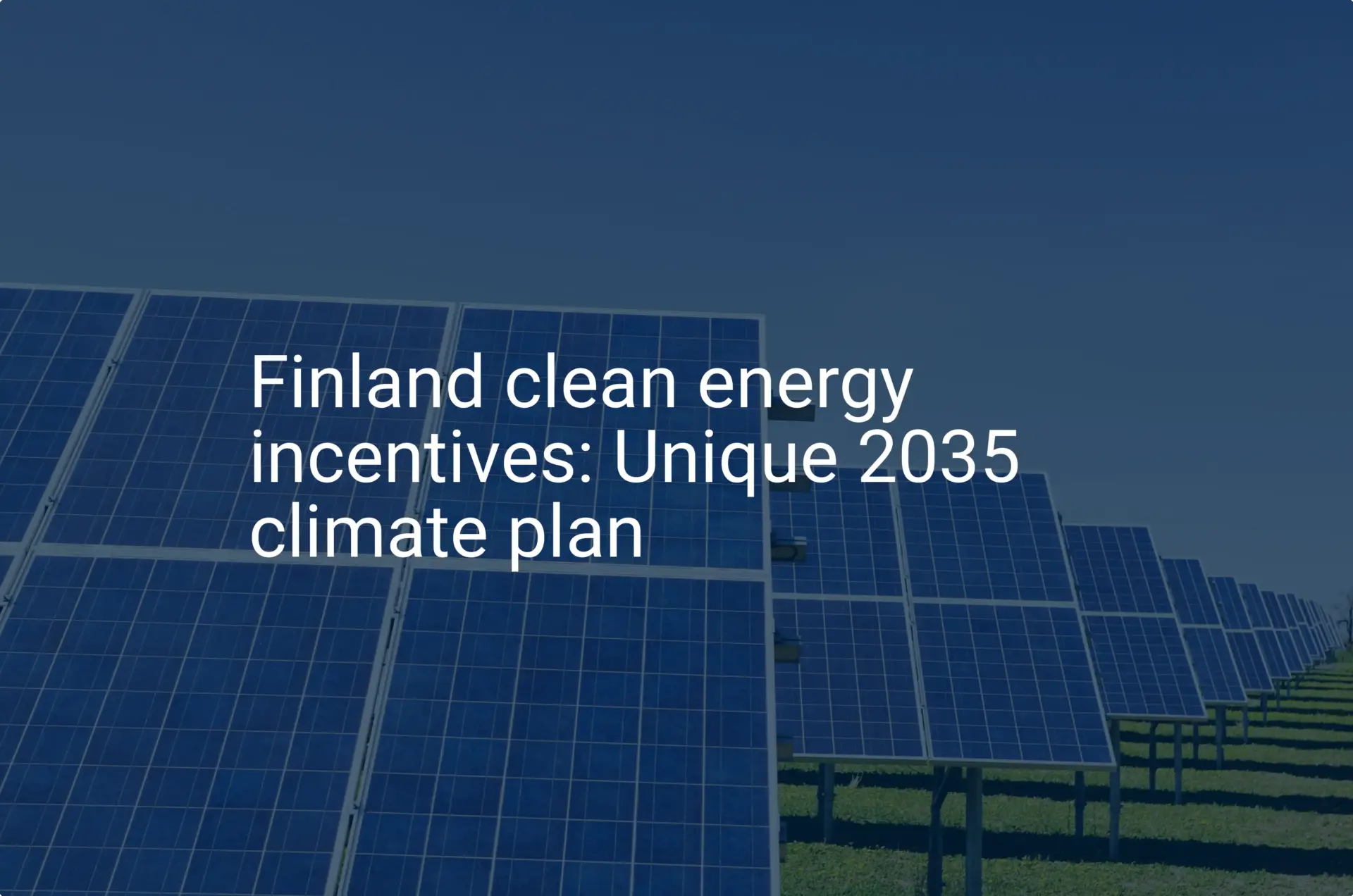Establishing a solar module factory in Europe presents a unique set of strategic considerations. For entrepreneurs considering Finland as a potential base, the country offers a compelling blend of political stability, technological prowess, and direct access to growing Northern European markets.
But the success of such an enterprise hinges not just on production technology, but on a meticulously planned logistics and supply chain strategy. The central challenge is geographical: sourcing essential raw materials, primarily from Asia, and efficiently distributing finished products to regional customers.
This article explores the logistical framework for a Finnish solar factory, focusing on the critical role of Baltic Sea ports in managing both inbound and outbound supply chains.
Finland’s Strategic Position in the European Solar Market
At first glance, a northern country like Finland may not seem an obvious choice for solar manufacturing. However, its strategic advantages become clear upon closer inspection:
-
Access to the EU Single Market: As a European Union member, a factory in Finland benefits from frictionless trade with 26 other member states, eliminating complex customs procedures and tariffs for regional distribution.
-
Proximity to Growing Markets: Finland is ideally positioned to serve the rapidly expanding solar markets in Scandinavia (Sweden, Norway, Denmark), the Baltic states (Estonia, Latvia, Lithuania), Poland, and Northern Germany.
-
Reputation for Quality and Stability: The “Made in Finland” label carries significant weight, signaling high manufacturing standards, ethical labor practices, and operational reliability—a key differentiator in a competitive global market.
These factors create a strong business case, provided the logistical complexities of global sourcing can be effectively managed.
The Inbound Supply Chain: Sourcing Raw Materials
A reliable supply of high-quality components is the bedrock of any solar module manufacturing operation. For a European factory, most of these materials are sourced from specialized producers in Asia.
A typical bill of materials includes several key components that must be imported:
- Solar Cells
- Solar Glass (Front and Back)
- EVA (Ethyl Vinyl Acetate) Encapsulant Film
- Backsheets
- Junction Boxes
- Aluminum Frames
The journey for these raw materials involves long-haul sea freight, usually originating from ports in China or Southeast Asia. This transit can take 30 to 45 days, a significant lead time that must be factored into production planning.
Finland’s primary gateways for this container traffic are the ports of Helsinki (Vuosaari Harbour) and Hamina-Kotka. Both are modern, deep-water ports capable of handling large container vessels. Crucially, they remain operational year-round, using ice-class vessels and icebreaker support during the winter to ensure consistent operations.

The Outbound Supply Chain: Exporting Finished Modules
While the inbound journey is long, Finland’s core competitive advantage lies in its outbound logistics. Once solar modules are assembled, tested, and palletized, they can be shipped to regional customers with impressive speed and efficiency.
The target export markets—Scandinavia, the Baltics, and Northern Europe—are all easily accessible via:
-
Short-Sea Shipping: Regular Ro-Ro (Roll-on/Roll-off) and container ferry services connect Finnish ports with key hubs in Sweden, Estonia, Germany, and Poland. Transit times are often measured in hours or a day or two, not weeks.
-
Road and Rail Networks: An extensive, well-maintained network of highways and railways allows for direct overland transport to neighboring countries and beyond, offering flexibility for both full-truckload (FTL) and less-than-truckload (LTL) shipments.
This ability to deliver finished products to customers in a fraction of the time it would take for modules to arrive from Asia creates a powerful value proposition: reduced delivery times, lower inventory requirements for distributors, and a more responsive customer service model.

Building a Resilient and Cost-Effective Logistics Strategy
A successful Finnish solar factory needs a strategy that balances long inbound lead times with agile outbound distribution. This requires careful planning in several key areas.
Inventory Management
The 30-45 day transit time for raw materials from Asia means a significant amount of working capital will be tied up in inventory “on the water.” To avoid production stoppages, the factory must maintain a sufficient safety stock of critical components on-site, even though this increases warehousing costs. A precise balancing act, guided by sales forecasting and production planning, is essential.
Logistics Partnerships
Working with experienced freight forwarders and customs brokers is critical. These partners can negotiate favorable shipping rates, manage import documentation, and handle the specifics of Baltic Sea logistics, including winter shipping protocols. Their expertise can prevent costly delays and administrative errors.
Factory and Process Design
Efficient logistics begin inside the factory walls. The factory layout must be optimized for a smooth flow of materials—from the unloading bays for raw material containers to the storage area for finished goods and the loading docks for outbound trucks.
Based on experience from J.v.G. turnkey projects, integrating logistics planning into the initial factory design phase can prevent significant bottlenecks later on. For example, a typical 50 MW factory requires a layout that includes buffer storage for at least four to six weeks of critical components to ensure production continuity.

Frequently Asked Questions (FAQ)
Why consider Finland for solar module manufacturing, given its northern location?
Finland offers a stable political and economic environment, access to the EU Single Market, proximity to growing Northern European solar markets, and a strong brand reputation for quality and engineering. These advantages can outweigh the challenges of its climate.
What’s the single biggest logistical challenge for a factory in Finland?
The primary challenge is managing the long lead times (30-45 days) for critical raw materials sourced from Asia. This requires robust inventory management and significant working capital to maintain a buffer stock and cover the value of goods in transit.
How do Baltic ports operate during the winter?
Major ports like Helsinki and Hamina-Kotka remain open year-round. A fleet of icebreakers maintains clear shipping lanes, and shipping lines use ice-class vessels designed to operate in these conditions, ensuring supply chain reliability.
Are there significant import tariffs on solar components into the EU?
Currently, most key solar components like cells can be imported into the EU without punitive tariffs. However, trade policies can change, and any business plan must account for this potential risk.
Conclusion and Next Steps
Operating a solar module factory in Finland is a strategically sound proposition for businesses aiming to serve the Northern European market with high-quality, locally produced products.
The logistical model is one of contrasts: managing a long, slow, capital-intensive inbound supply chain from Asia while leveraging a fast, flexible, and highly efficient outbound distribution network into Europe. Success hinges on a deep understanding of these dynamics. A comprehensive business plan must account for inventory costs, shipping volatility, and the critical importance of strong logistics partnerships.
Understanding this logistical framework is a foundational step. The next stage involves a deep dive into factory planning, technology selection, and financial modeling to build a complete picture of the investment and its potential returns.






